Enhanced TDS
Knowde-enriched technical product data sheet
Identification & Functionality
- Carrier
- Chemical Family
- Cleaning Ingredients Functions
- Technologies
- Product Families
Features & Benefits
- HII Features
- Product Benefits
- Good cationic surfactant and softener compatibility.
- Improves the dispersion in cold water.
- Improved hydrolysis stability.
- Benefits of using Sifloc - D in a household product:
- Effectively builds desired viscosity and flow properties
- Imparts vertical surface cling efficacy of cleaning product
- Shear-thinning properties for ease of dispensing (e.g., pour, spray, etc) and application properties (spreadability)
- Provide transparent or opaque thickened solutions
- Pre- or post- addition possible for ease of manufacturing
Applications & Uses
- Markets
- Applications
- Home Care Applications
- Use Level
- 0.1 - 5 % (for softener and surfactant formulations)
- Product Applications
- High Cationic Acrylamide Copolymer Liquid Thickener is a cationic thickener for acid aqueous compositions, especially for detergency and domestic surfactants.
- It is so effective for amidoamine and esterquat formulations.
- High Cationic Acrylamide Copolymer Liquid Thickener is also indicated to formulate cationic clothes softeners.
- Suggestion of Use
It is recommended to stir the product before use.
Properties
- Physical Form
- Soluble In
- Appearance
- White liquid
- Physical Properties
Value Units Test Method / Conditions Brookfield Viscosity (at 25°C, 20pm, solution 1% In water) 5000 - 11000 cPs - Typical Properties
Value Units Test Method / Conditions Ionic Character Cationic - - pH Value (1%) 3 - 5 - - Active Content 55 - 57 % - Density (at 20°C) 1 - 1.10 g/cm³ - Visosity (1%) 3500 - 7000 cPs - Free Acrylamide Content (in LDPs) 0 - 500 ppm Brookfield Viscosity (at 25°C, 20rpm) 200 - 2000 cps
Regulatory & Compliance
- Chemical Inventories
Technical Details & Test Data
- Cationic Liquid Dispersion Polymers
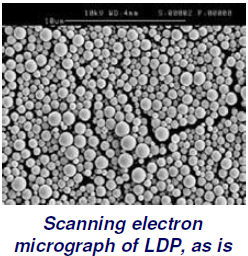
- Cationic, non-associative polymers
- Products supplied as a liquid dispersion polymer (LDP)
- Efficient rheology at low incorporation levels with shear-thinning rheological properties
- Product esthetics of opaque, rich, thickened aspect
- Shear tolerant
- Stabilize dispersions and emulsions
- Easy-to-use liquid form e> automated dosing
- No heat required for polymer development
- Pre- or post- addition of Sifloc - D to formulation possible for flexibility in manufacturing process
- Cationic Polymers
- Rheology modifiers for aqueous-based products
- Aqueous solutions of Sifloc - D cationic products are non- Newtonian fluids that are shear-thinning and exhibit no thixotropy to provide:
- Desired viscosity for pour and dispensing properties
- Application (e.g., spreadability) of product
- Impart vertical surface cling to enhance product efficacy (e.g., for cleaning, disinfection, etc)
- Function to stabilize dispersions
- Linear build of viscosity as a function of Sifloc - D concentration for ease of manufacturing processes
- Fabric Rinse Conditioners
Benefits of Using Sifloc - D in a Rinse Conditioner:
- Versatility of use in dilute to ultra conditioners with major types of softener actives
- Effectively builds desired viscosity and flow properties
- Non-associative rheology modifier that is shear tolerant for benefits in manufacturing and packaging processes of rinse conditioners
- Stabilizes dilute and concentrated rinse conditioners for long-term product stability, especially ester quat-based rinse conditioners, which are subject to hydrolysis
- Enhances stability of fragrance emulsion in the conditioner
- Potential for post addition of Sifloc - D for simplification of manufacturing of rinse conditioners of varying viscosities
Dilute Ester Quat Fabric Rinse Conditioner:
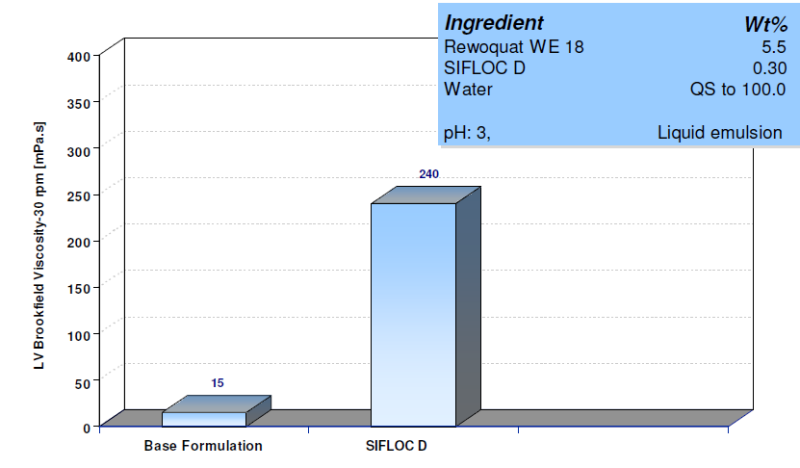
Dilute DHTDMAC Fabric Rinse Conditioner:
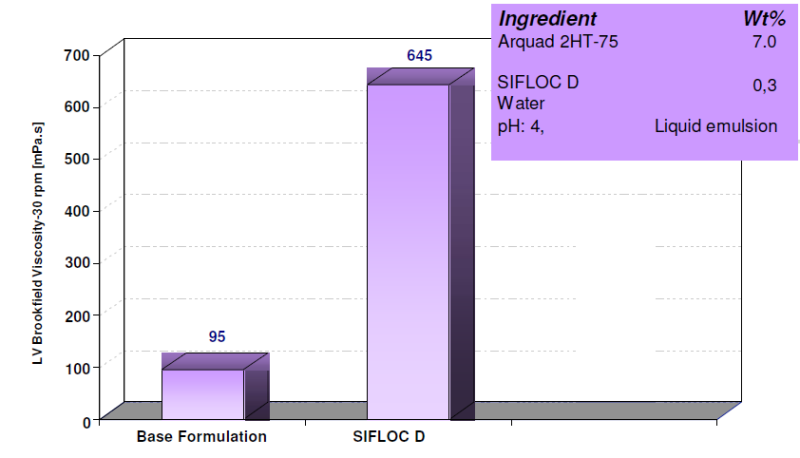
Long-term Stability of Fabric Rinse Conditioners:
Fabric rinse conditioners based on ester quat typically suffer from hydrolysis of the quat to fatty acid and amine
- Over time the fatty acid builds up and causes the product to thicken and eventually to solidify
- Higher temperatures increase hydrolysis rate
Thus, storage and transportation conditions will affect long-term stability.
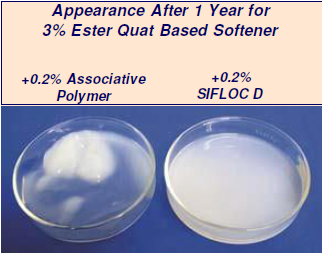
Effect of High Shear on Dilute Fabric Softeners:
- Fabric rinse conditioner with Sifloc - D is not adversely affected by shear.
- 3% actives, rinse conditioner (Armosoft® DEQ)

Storage Stability of Post Modified Ultra Rinse Conditioner:
- 16% active ester quat dispersion thinned with calcium chloride. Initial viscosity of 102 mPa.s
- Viscosity then adjusted with 0.2% Sifloc - D
- Excellent stability of ultra fabric rinse conditioner containing Sifloc - D
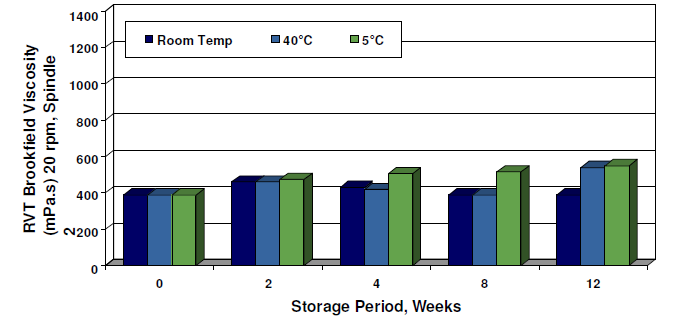
- Rheology Modifiers
- Highly efficient cationic rheology modifiers for aqueous-based consumer or professional HI&I products
- Compatible with typical HI&I ingredients
- Impart visual appeal to end product through rheology
- Transparent or opaque product esthetics that enhance consumer perception of product performance
- Improve product efficacy
- Provide desired application properties to end product
- Stabilize dispersions and emulsions
- Ease of use
- Viscosity Performance
Sifloc - D: Viscosity versus pH
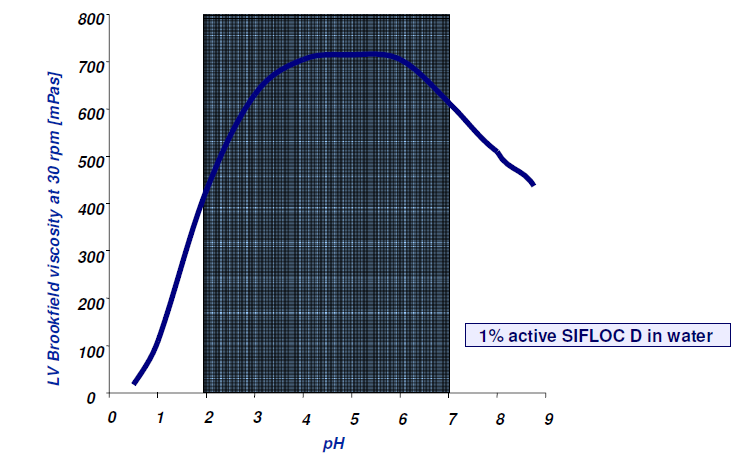
- Most efficient in a pH range from 2 to 7
Sifloc - D: Viscosity versus Concentration
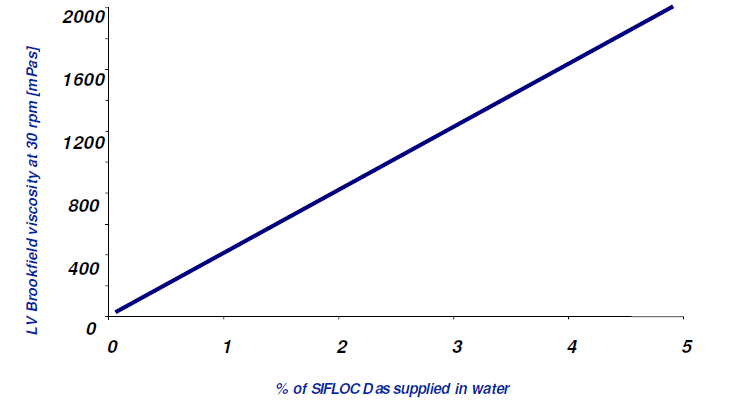
- Linear viscosity increase with increasing polymer concentration
Packaging & Availability
- Packaging Type
- Packaging Information
High Cationic Acrylamide Copolymer Liquid Thickener is available in drums 120 Kg and IBC 1000 Kg.
Storage & Handling
- Shelf Life
- 12 months
- Storage Conditions
- Shelf life when stored in dry warehouse conditions between 5°C and 30°C.
- Stored in sealed containers, protect from frost and direct exposure to sun light.